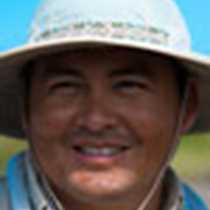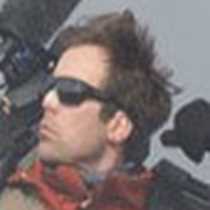Today we visited Floreana Island, to follow in Charles Darwin’s footsteps.
Before breakfast, we went ashore on Punta Cormorant, with a fascinating beach of olivine sand. Here we walked along a large salt pond, where a few flamingos were spotted. The trail surrounded by endemic and native vegetation led us to a second beach of incredibly fine, white, coralline sand, a favorite nesting site for green sea turtles. Turtle nesting activities are still underway here, and we were lucky enough to see a healthy female heading back to the ocean after laying the eggs. What an incredible way to start the day!
Later on, after breakfast, our captain repositioned the ship near Champion Islet. This is a volcanic cone, now eroded, with rocky shores, home to sea birds and Galapagos sea lions, but also home to the remnant population of the Floreana mockingbird, which was driven almost to extinction by cats, rats and other introduced predators on the main island.
We explored the islet by Zodiac, in search of these rare and unique birds (which inspired Darwin in the formulation of his theory of evolution through natural selection) and the rest of the morning we devoted to enjoying the incredible clear water and its marine life, from our glass bottom or by snorkeling. Plenty of playful sea lions gave our guests the experience of a lifetime!
Following lunch, we spent the afternoon enjoying the beach and visiting the famous Post Office Bay. This famous landmark was first mentioned in 1793 by British Captain James Colnett and is still use to mail letters with no stamps required! Once we had deposited our letter and learned about the human history of the island, we continued with our exploration of the bay by kayaks.
During the outings, our guests were able to learn about the methods to control invasive species and an ambitious restoration program to recover the ecosystems of Floreana, called the Galapagos Verde 2050, and how they can take part on the efforts to protect this beautiful archipelago, through the Galapagos Lindblad-National Geographic Fund.










